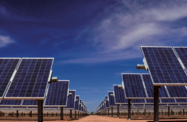An ambitious programme to hike electricity generation has been launched in Ghana to help alleviate the frequency of blackouts, with a particular focus on expanding the role of the private sector.
On February 26, President John Mahama announced that 3665 MW of power generation capacity – more than double the amount of existing capacity – would be added to the national grid over the next five years. “The effect of this power crisis has affected all Ghanaians. We have been here before in 1998 and 2007 and I do not intend to manage it. I intend to fix it,” said Mahama during his third State of the Nation address. He added that new supply would be sufficient to meet domestic as well as industrial needs.
Low rainfall at the country’s hydroelectric facilities, erratic gas supplies from Nigeria through the West African Gas Pipeline (WAGP) and irregular maintenance have hampered generating output in recent years. Ghana, which gets roughly half of its power from hydro and half from thermal, has an installed capacity of about 2800 MW, although actual generation capacity is 2125 MW, according to the Ministry of Energy, with demand rising 200 MW annually.
In recent months, almost daily power cuts have led to protests as well as warnings from the mining industry that the production of gold – which accounted for $4.6bn of total revenue in 2013 – could be affected if shortages continue.
Independent producers
The 3665 MW of new capacity pledged by Mahama will come from sources including independent power producers (IPPs) and plants under development by the Volta River Authority (VRA), the state-owned main national power generation and supply company, he said.
Power units expected to come on stream over the next five years include the expansion of the SunonAsogli coal-fired plant with 750 MW and a further 360 MW from the SunonAsogli (phase II) plant, Norwegian company Jacobsen, with 360 MW; Cen Power with 350 MW; and Amandi with 240 MW. US multinational General Electric will also provide 1000 MW through a gas-fired plant – expected to be completed by 2016 – while the VRA will add two more units.
With the country focusing on the development of power-hungry sectors including manufacturing and mining, the need for investment and restructuring to improve efficiency has become even greater.
According to a World Bank 2013 report, Ghana needs $4bn of investment in its power system over the next decade to compensate for years of underinvestment in power generation, transmission and distribution infrastructure. With power demand growing at an estimated 8-12% a year, the need for investment is pressing, prompting the government to turn towards the private sector for financing, ownership, management and service provision of facilities. Ghana is keen to encourage private investment in renewable energy in particular, having set a target of achieving 10% of generation from renewable sources other than hydroelectric by 2020.
Power ships sailing from Turkey
In the short term, “emergency” power is also being purchased to bridge the gap. The Ministry of Power promised in February that 1000 MW of power will be procured and supplied to the grid. Nearly half of this will come from two emergency power barges, which the government commissioned last year from Turkey’s Karadeniz Energy Group (Karpower International). The ships, essentially floating power stations, will feed into the national grid from moorings at Tema and Takoradi, the country’s two main ports, the latter of which is at the heart of the crucial oil industry.
The vessels, which are expected to start delivering power from May, will generate 450 MW of energy and eventually provide 21% of Ghana’s power supply in the near term. But officials have suggested that they will also play a role in the country’s power reserve margin and serve as extra capacity that can be brought on at peak times and when other plants are undergoing maintenance works.
The ships will use cheap heavy fuel oil from Ghana’s domestic production before a possible transition to gas in the sixth year, after the country’s domestic gas infrastructure – intended to process and transport production from the Jubilee fields – is up and running. The switch is projected to lower the cost of power from $0.19 to $0.15 per kilowatt.

